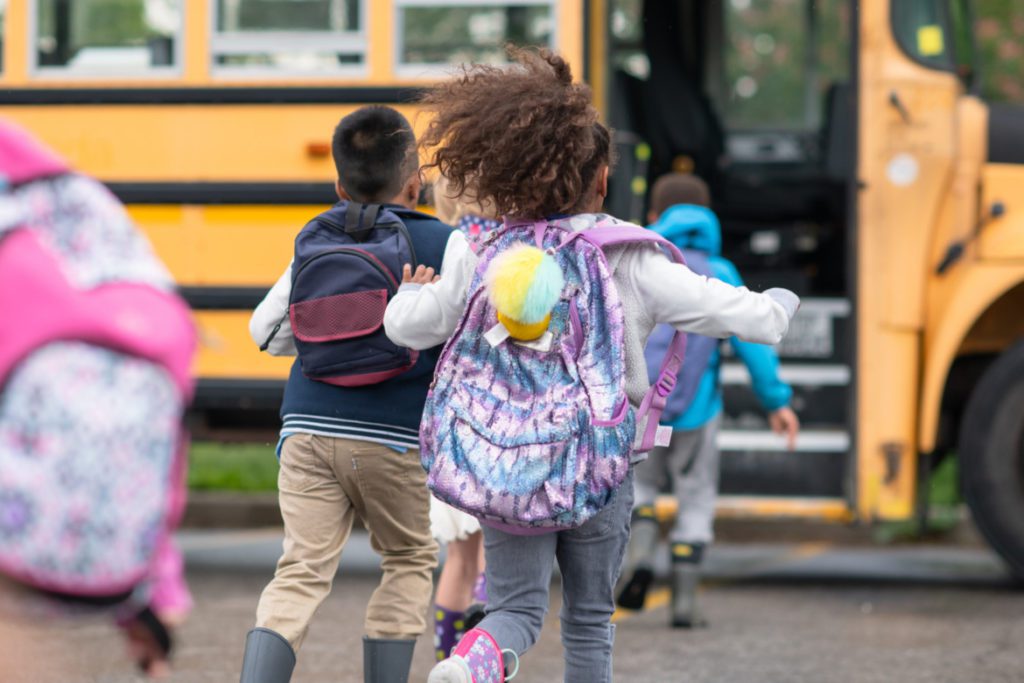The Classroom Bus: We’ll All Get There Together


Business management expert Jim Collins famously wrote in his book “Good to Great: Why Some Companies Make the Leap…and Others Don’t” that an important aspect of building a high-performing organization is making sure you “get the right people on the bus.” He extended the idea by talking about the need to get “the right people in the right seats.”1
As a teacher, you don’t get to choose who’s “on your bus”—that is, the children who are in your class each year. However, we can still invoke the metaphor of people on a bus to help us think about creating a strong, positive, effective classroom community.
Here are a few thoughts to consider as you plan for the coming year.
1) Often, the only adult on the bus is the driver, and they’re busy driving the bus.
Rules for riding the bus to and from school are often somewhat different from those in a classroom—and necessarily so. Physical safety is a far more complex issue on a large, moving vehicle, and the only adult on the bus is busy driving the bus.
Buses, therefore, typically have rules about staying seated, in a single spot, during each journey. The driver may assign seats to some or all of the children and, in effect, authorize which children may interact with each other. They have rules about raising and lowering the windows on the bus and about keeping hands, feet, and heads inside. They have rules about talking, eating, drinking, chewing gum, and singing. I’ve even seen bus rules related to how loudly children may laugh.
But no rule will ever be as effective as a child’s own self-regulation skills and sense of herself as a valuable member of a community. In a caring community, people “do the right thing” as a matter of choice—not because someone in power is watching, but because the members of the community have a clear understanding of its intrinsic value to self and others.
2) Not everyone gets to sit in the front seat, but everyone gets to go.
As an elementary school administrator, I was repeatedly surprised by how many families asked if their children could be assigned a permanent spot in one of the front seats on the bus.
In fact, a driver once told me that if every child whose parent asked for the front seat were to actually sit in the front seat, he’d need a bus two seats deep and two dozen seats wide. The thought of that image makes me chuckle even now (many years later) as I type those words.
The good news is, regardless of where children are sitting on the bus—either literally or figuratively—they all get to make forward progress. Similarly, regardless of the many ways that the members of your classroom community will be different from each other, they are all children who want and need caring adults who will point them in the right direction and help them get to where they need to go.
3) Each child’s path begins at its own unique point, but you all get to take the journey together.
No, you don’t get to choose who boards the metaphorical bus of your classroom community. Nor do you get to choose any child’s unique starting point.
A bus driver is responsible for learning where each child currently lives and meeting them in that place, wherever they are. Once the children are aboard, they become a group that quite literally travels together in a shared journey.
Similarly, you as a teacher have a responsibility to learn where each child’s knowledge, skills, and abilities currently reside. You make a plan to meet each child wherever they are and then share the journey as a classroom community. Along the way, there will be many stops and starts. Many sights and sounds. Many turns, and perhaps even a few roadblocks. Sometimes you will all be heading to the same place, and sometimes each child will be “getting off at their own stop.”
But you all get to take the journey together.
You don’t always get to choose who’s a member of your community (or your commute!). But by meeting each child where they are and building the positive relationships that will drive each child’s development and learning, you can still become a caring, collaborative classroom community on a wonder-filled journey, with always just the right people on the bus.
Learn more about building positive relationships and creating a community where each child is valued and respected with our free eBook, “Six Positive Messages To Guide a Year of Teaching and Learning.”
1. Collins, J. (2001). Good to great: Why some companies make the leap…and others don’t. Harper Business.